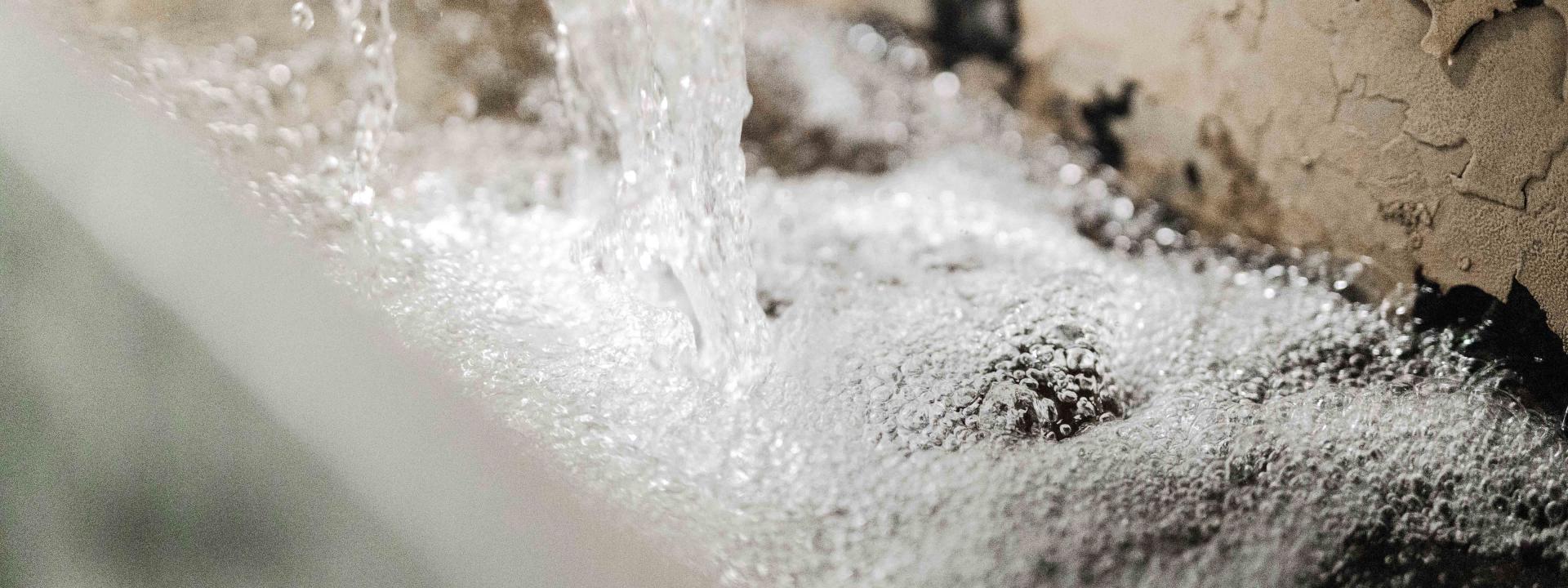

As a pioneer and market leader in the field of state-of-the-art textile finishing, we have always been acutely aware of our responsibility to protect the environment. As a result, the standards we set ourselves in this respect are just as high as the quality standards we set for our products. This is evidenced by the many certifications and sustainability seals we have amassed over recent decades; a collection we continue to expand. For example, we have been recognised with multiple awards for our implementation of sustainable manufacturing and working conditions. Environmental responsibility is something we continually strive to improve in our company.
... to our customers' demands for outstanding quality, transparency and sustainability in the textile finishing sector."
Burghard Schneider, CEO of AG Cilander

Daily
measures
Operation of state-of-the-art exhaust air purification systems – no harmful waste gases of any kind leave our facilities
With continuous tracking of the course of reduction
Use of chemicals as sparing as possible and use of environmentally friendly products containing low amounts of harmful substances
Consultation with specialists to determine the most environmentally friendly disposal methods for chemicals
Our own solar plant supplies our main factory in Herisau with solar energy
On-site at our production plant, a biological treatment plant reduces the polluting load and reclaims energy by means of heat exchangers
Textile finishing gives materials additional functional properties for comfort, protection and safety. This requires sophisticated processes and facilities that involve high levels of water and energy consumption. Chemical substances are also essential in the production of technical textiles.
In this context, as a part of the textiles industry, we are inevitably faced with the task of determining our environmental footprint and the effects our textile finishing processes have on the environment. AG Cilander has never shied away from these kinds of justified, important critical inspections – quite the opposite! As a pioneer and market leader in the field of state-of-the-art textile finishing, we have always been acutely aware of our responsibility and make protecting the environment our top priority.
In the same way our working processes are highly varied, so too are our sustainability principles. That is why we map the entire value chain and trace the raw materials all the way from source to finished product. This allows us to achieve maximum transparency, so our customers can be sure their products are fully traceable.
Our constant endeavours to optimise our processes not only result in improved economic efficiency, but also lead to a continuous improvement in performance in terms of environmental sustainability standards – take, for instance, the development of an innovative fluorocarbon-free finishing for water resistance. AG Cilander was first awarded this textile hallmark, which certifies that a manufacturing process is verifiably socially and environmentally responsible across the entire textile manufacturing chain, in 2009. In terms of our finishes, this means that we may only use dyes, chemicals and resources that are classified and labelled as harmless in terms of their environmental and toxicological properties.
Our sustainability measures go beyond our certifications
As well as earning hallmarks and certifications, the sustainability measures implemented at AG Cilander are designed to encompass additional aspects, such as:
Uncompromising dedication to proper disposal and energy recuperation
We also place particular emphasis on the issues surrounding disposal and energy recuperation. Our treatment plant and five heat exchangers are in operation all day and all night for this purpose. The treatment plant reduces the pollutant load by up to 80%, which enables us to maintain compliance with continuously increasing limit values. It is based on a two-stage biological purification process, in which the waste products from our finishing processes are broken down by bacteria. The remaining sludge is then disposed of in the correct manner. The plant is serviced, maintained and monitored closely.
Our drive to keep developing more economically and environmentally sustainable processes and products has also had an effect on our exhaust heat exchanger, as well as the four wastewater heat exchangers that we use in two- and three-shift operation. These are another element in our energy concept, which sets out aims that we hope to achieve by 2025. Using the heat exchangers, we are already able to feed the recuperated energy back into our process cycle – we do not lose any warm water in the form of wastewater. The use of these systems also enables us to conserve resources, as we do not need to purchase any additional gas or oil in order to generate power.
Green energy
When it comes to energy, we have taken another pioneering step in the form of our own photovoltaic system. It has been supplying our main factory in Herisau with solar energy since the end of 2022. The system covers an area of 2547 square metres and comprises 1306 solar modules. This allows it to produce around 420 MWh of energy each year. We use approximately 85 to 90 per cent of this energy within the company – the surplus is fed back into the public power grid, thereby benefiting the region.
Made in Switzerland
Last but not least, we have one more trump card in our pocket when it comes to our dedication to combining textile finishing and sustainability: The "Made in Switzerland" label. At our own facilities in Switzerland, we are always in full control of our continuous compliance with all environmental, economic and social measures. This is the cornerstone of our ability to work with nature in as responsible a manner as possible and to help establish a sustainable future for textile finishing technology.